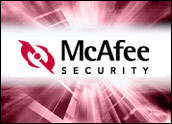
Computer Associates today announced the acquisition of PestPatrol, a privately held provider of antispyware software, in an all-cash transaction. Financial details were not disclosed.
CA will market the PestPatrol technology as eTrust PestPatrol and will incorporate it into its eTrust Threat Management software portfolio, designed to protect organizations from Internet dangers such as viruses, spam and inappropriate use of the Web by employees.
The PestPatrol technology complements antivirus software, firewalls and intrusion-detection systems by detecting and removing spyware, adware, Trojan horses, denial-of-service attack agents and other backdoor Web-based threats from individual and networked PCs.
“PestPatrol has done a superlative job of addressing the entire spectrum of nonvirus malware threats that have become so annoying and dangerous for PC users inside and outside the enterprise,” said Russell Artzt, executive vice president of eTrust security management at CA. “This acquisition enhances CA’s position as the world’s leading provider of security management solutions for the safety of Internet connectivity and the integrity of computing environments in the office and home alike.”
Spyware, Adware and Other Threats
Spyware, adware and other nonvirus threats are rapidly proliferating and represent a major security and privacy risk to both corporate and consumer users — as well as a primary cause of diminished PC performance.
In April 2004, EarthLink said it found an average of almost 28 spyware items on each PC it scanned during a first quarter audit.
PestPatrol complements traditional antivirus defenses by giving network administrators the ability to define granular rules for spyware scanning.
Administrators can define “safe lists” or exclusion files of authorized applications, fine-tuned by department or individual, to prevent false alarms.
Because the network administrator performs the spyware scanning and removal, desktop users don’t need to be interrupted.
Because all scans and updates are performed remotely over the network, the network administrator no longer needs to visit machines personally. Scans can be scheduled to occur automatically at preset times or when a remote computer logs into the network.



















































Social Media
See all Social Media